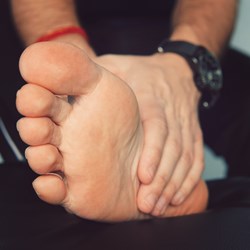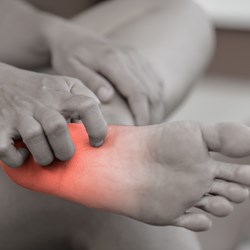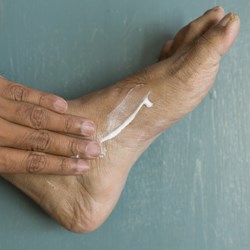Feet
Diabetes puts you at a much higher risk of developing foot problems. Being aware of this will help you look after your feet.
Diabetes can cause damage to the nerves,which can lead to a loss of feeling which means you may not notice an injury or wound to your foot; reduced sweating due to nerve damage can result in hard cracked skin, and foot ulcers can occur. Nerve damage can also, in rare cases, lead to bone and muscle weakness which can change the shape of the foot.
Diabetes can also lead to ‘furring’ up of the arteries, causing a reduced blood and oxygen flow to the feet. This can also increase the risk of foot ulcers and means wounds may not heal and can get infected much more easily.
People with diabetes should have their feet screened by a health care professional to determine if there are any signs of nerve or blood supply damage. Screening to work out your risk of developing foot problems like ulcers will be repeated every 1-2 years and you may be referred to a podiatrist if you are thought to be at risk.
It’s really important to check, wash and moisturise your feet daily, cut or file your toenails regularly; make sure you wear appropriate footwear and treat any minor cuts or blisters immediately. It’s also very important to attend your diabetes foot screening appointment every year. Keeping your blood glucose levels in the target range will significantly reduce the risk of any foot problems.
To find out more about diabetes and feet, register for our Understanding Type 1 Diabetes or Type 2 Diabetes eLearning course. There is also a list of additional resources about diabetes and feet below.
Advanced Search
Resource type -
Language -
Type of diabetes -

How Diabetes Can Affect Your Feet
Having diabetes means you're at much greater risk of developing foot problems. This is because raised blood glucose, also known as blood sugar, can damage the sensation in your feet. It can also affect your circulation, which can lead to you getting less blood supply to your feet.

Looking After Your Feet When You Have Diabetes
Diabetes can gradually damage the nerves and blood vessels supplying your feet. This happens so slowly that you may not notice that your feet are less sensitive than they used to be. As your feet are less able to let you know when something is damaging them, it is important to look after them. This…














